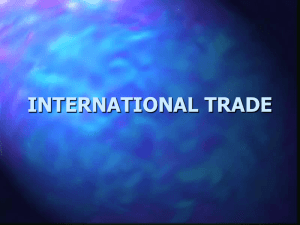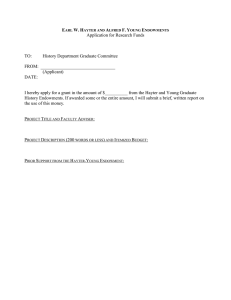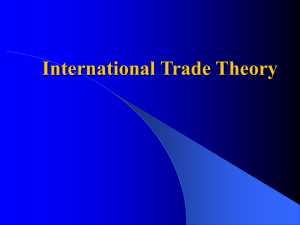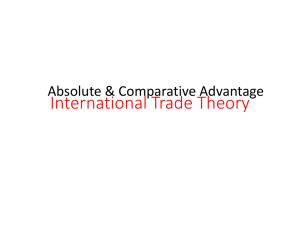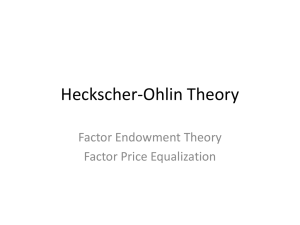MNB3701 Tutorial Letter: Global Business Management Feedback
advertisement
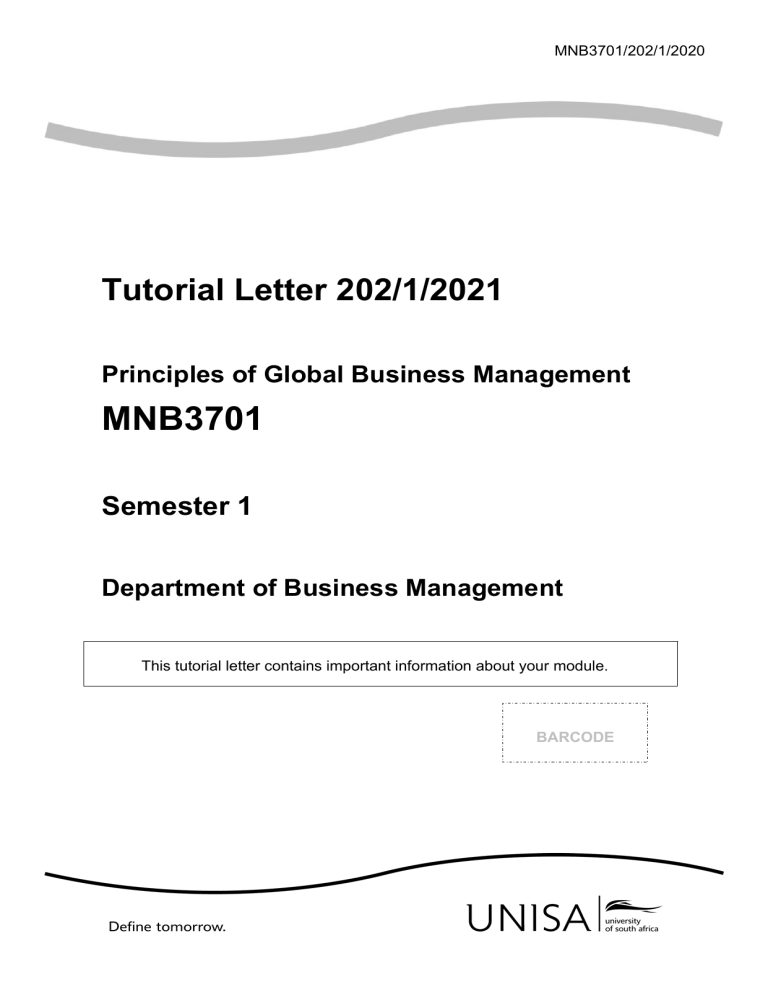
MNB3701/202/1/2020 Tutorial Letter 202/1/2021 Principles of Global Business Management MNB3701 Semester 1 Department of Business Management This tutorial letter contains important information about your module. BARCODE MNB3701/202 CONTENTS Page 1 INTRODUCTION ............................................................................................................................ 3 2 FEEDBACK ON ASSIGNMENT 02................................................................................................ 3 3 IN CLOSING ................................................................................................................................. 10 2 MNB3701/202 Dear Student 1 INTRODUCTION This tutorial letter contains feedback on Assignment 02 of the Early Completion Programme (ECP). Please review the contents of this tutorial letter carefully, as it will give you valuable insight into your studies and guide you in your learning experience. You will receive your marked assignment, together with the marker's comments and the assignment evaluation sheet (rubric). The assignment evaluation sheet (rubric) shows how marks have been allocated; it will help you to identify areas in which you may need to improve (TL202 does not indicate the marks allocated, but the rubric indicates the assessment criteria and mark allocation). Therefore, you should read this tutorial letter, together with the feedback in the assignment and the rubric attached to your assignment. 2 FEEDBACK ON ASSIGNMENT 02 The outcomes for learning units 1 to 9 were assessed in Assignment 02, which was an essay-type assignment. Guidelines were provided via the online MNB3701 module site, under Additional Resources, on the technical aspects of answering essay-type questions and in Tutorial Letter 001_3_B_ECP. You would have been penalised if you did not adhere to these guidelines. In addition, merely copying facts from the prescribed book and other sources, without supporting your arguments, where necessary, would not have been sufficient. Remember that you had to number your pages and include a table of contents as the first page of the assignment. This assignment had to start with an introduction. In the introduction, you had to clearly state the topic(s) of the essay. You also had to introduce the reader to the article or case study on which the assignment is based, which is entitled “US anti-dumping against Chinese apple juice concentrate producers”. The following is an example of an introduction to the assignment. 1 INTRODUCTION The discussion below is based on the case study, entitled "US anti-dumping against Chinese apple juice concentrate producers”. The case study gives a real-world scenario in which organisations in different locations comparatively have different resource and capability endowments, which makes it mutually beneficial to engage in the exports and imports of goods and services. Furthermore, in international trade, there are both institutional rules that constrain trade (tariffs and non-tariff barriers) 3 MNB3701/202 and promote international trade (such as the World Trade Organisation). Explanations of trade flows between countries thus need to consider the influence of these institutions, specifically political, economic and legal institutions, on international trade. The topics that are dealt with in the sections below are: (1) Absolute and comparative advantage theory that give explanations as to why there is growth in trade between nations 2); how political and economic institutions influence international trade; and (3) how free trade is beneficial to host and home countries. Note that two marks were allocated if you included a table of contents, with appropriate headings and numbering. Concerning the introduction, two marks were allocated if an introduction was included that clearly indicated to the reader what would be covered in the sections that follow. Note that all four sections had to be dealt with in your introduction. In the following section, you should have answered the assignment questions, using headings and subheadings corresponding with the questions and the table contents. Note that appropriate headings and subheadings had to be used. Simply rewriting the questions as headings was not sufficient. 2 CLASSIC THEORIES OF INTERNATIONAL TRADE Considering absolute and comparative advantages, how would you explain the growth in AJC exports from China to the USA? In this section, you were required to present three or more coherent and rigorous arguments on how the theories of absolute and comparative advantage explain the growth in AJC exports from China to the US. You may recall, in learning unit 4 (chapter 4 of your textbook), that resources and the capabilities of organisations determine whether a competitive advantage is conferred to an organisation. Applying resource-based theory to international trade suggests that organisations use their resources and capabilities to produce goods and services that confers a competitive advantage in markets in countries other than their home country. Hence, organisations in different countries, comparatively, have different resource and capability endowments, which makes it mutually beneficial to engage in the export and import of goods and services. In the sections that follow, two classic theories of international trade are used to explain the growth in AJC exports from China to the USA. Furthermore, it is important to note that when we ask the question, “Why do nations trade?” we are really asking, “Why do organisations from different nation’s trade?” Hence, it is important to understand that, fundamentally, an organisational level explanation is given to explain why there is trade between 4 MNB3701/202 nations. In other words, both the resource-based and institutions-based views help to explain why nations trade and why there is growth in international trade. The theory of absolute advantage suggests that under a free trade, each nation can make economic gains by specialising in those economic activities in which the nation has an absolute advantage (Peng & Meyer 2019:124). What is an absolute advantage? It is the economic advantage that a nation enjoys from higher productivity in an economic activity or product category than other nations. If two countries enjoy absolute advantage in two different product categories, the motivation to trade is obvious. For example, China has higher productivity in producing AJC, but the USA, likely, has higher productivity in a different product category. It makes sense for the two nations to trade with each other in these different product categories. In game theoretical terms, international trade, from an absolute advantage perspective, is not a zero-sum game. It is a positive-sum game (win/win situation) for organisations in both China and the USA, rather than win/lose interdependency between organisations in different locations (Brandenburger & Nalebuff, 1995). Furthermore, where many nations are trading with each other, it would be difficult to find a clear absolute advantage (China trades with many countries other than just the US). A more realistic explanation of why nations and their organisations would trade with each other is the relative differences in productivity in producing goods and services. Hence, the theory of comparative advantage is useful, as it focuses on the relative advantage (not absolute) in one economic activity that one nation holds in comparison with other nations. In other words, countries will specialise in those activities they have a comparative advantage in. The concept of a comparative advantage is therefore useful to support arguments made about the challenges of trading internationally, and explanations as to why organisations succeed or fail in trading internationally, as relative differences in resource endowments play a role. In other words, countries are endowed with resources, which give organisations operating in a specific location a comparative advantage over rivals in other locations. Location has implication for management action in finding, nurturing and leveraging a comparative advantage. Note, factor endowments underpin a comparative advantage. Capital, land, labour and technology endowments would be examples of differences in factor endowments (Grant 1991:537). In terms of the case study, both basic and advanced factor endowments played a role in AJC producers’ growing exports from China to the US. For example, a basic factor endowment would be cheap labour and advanced factor endowments would be investment in projects made by individuals, organisations or the government in advanced factors such as communication infrastructure, sophisticated skills, and research facilities (in terms of the case study, investments by the government in plants and technologies). Furthermore, given that emerging and developed economies are more knowledge-driven economies, technological factor endowments play a key role in their competitiveness in international trade. 5 MNB3701/202 In terms of the case study, organisations operating in China specialises in activities in which they have a relative abundance of resources, such as cheap labour. This explains a broad pattern of trade with other countries such as the US. It should also be noted that advanced factor endowments are the most significant for gaining a competitive advantage. The relationship between basic and advanced factor endowments is complex. Basic factor endowments provide an initial advantage, which is then extended and reinforced over time through more advanced factors. Furthermore, when a country has a disadvantage in basic factor endowments, then there will be pressures to invest in advanced factor endowments (Grant 1991:537). In terms of businesses operating in China, in the long run, fundamentally, more “intelligent” technologies such as fully automated and autonomous production systems would erode basic factor endowments advantages gained in the form of cheap labour. Hence, there will be pressures to invest more in advanced factors of production. Overall, in terms of explaining the competitiveness and prosperity of nations, the “upgrading” of a nations comparative advantage through innovation and investment in advanced factors of production explains the growth in international trade and prosperity of nations (Grant 1991). To obtain an excellent mark, you had to demonstrate a very good understanding and application of the classic trade theories. 3 INSTITUTIONS INFLUENCE ON INTERNATIONAL TRADE From an institutional perspective, what explains the imposition and the reduction of tariffs for AJC? In this section, you were required to present three or more sound, coherent arguments on how economic and political institutions influence international trade. Theories of international trade, in general, assume that the rules of the game are the same in every country. However, international trade is more often entangled with a web of social and complex political processes that do not always result in the best arrangements of trade between countries (as illustrated in the case study). Many of the rules of trade act as barriers to international trade (Peng & Meyer 2019:135-136). These barriers have a path dependency. Meaning, there are historical differences between countries and protectionism policies are created to protect local industries, which, in turn, distort international trade and explains why customers lose out by having to pay higher prices. Why are tariffs then imposed at all? The answer essentially boils down to political processes. As illustrated in the case study, in countries such as the US, there are special interest groups that are well organised to advance their specific interests. As illustrated in the case study, the US commerce department decision was based on petitioners that paid a consultant to collect data where there was no data, or at least data that seemed comparable. The response by the AJC producers was to challenge the decision made to impose severe tariffs, as it was based on data that was not reliable, or an 6 MNB3701/202 accurate reflection of the state of prices and calculation of the cost of production. Hence, the overall reduction of tariffs was a victory for the major AJC producers in China. The management implication that can be drawn from the case study is that managers need to be politically aware that the gains made in creating and leveraging a comparative advantage need to be safeguarded by actively engaging in political and legal institutional processes. Furthermore, a more recent trend is to reduce tariff barriers in international agreements (but it is observed how tariffs can be used to escalate a trade war between China, the US and other countries, using protectionism as a way to “balance out” positions of power in international trade). Globally, countries have favoured the use of non-tariff barriers. Meaning, countries use subsidies, import quotas, export restraints, local content requirements, administrative processes and anti-dumping duties. As illustrated in the case study, anti-dumping duties are levied on imported goods, if such goods are sold at less than “fair” prices or simply dumped in markets. In the case of Chinese manufacturers with significant scale advantages, they can end up producing more goods than the demand in certain markets. Goods are then sold at below market prices to sustain operations at such large scales. In terms of economic arguments against free trade and the imposition of tariffs, is that protectionism is needed to protect jobs in domestic industries, shield infant industries, which stand no chance of surviving without government intervention, and the fair distribution of the benefits of trade. In other words, some industries and workers will lose out more than others. However, the theory is that society, as whole, is better off as result of free trade, but not every worker is always better off. To obtain an excellent mark in this section, a very good understanding and application of the institutions-based view had to be demonstrated. Further, it is important to demonstrate insight that a comparative advantage is not fixed. Managers need to constantly monitor the economic and political institutional landscape for changes that may erode the comparative advantage an organisation advanced in different locations. 4 BENEFITS OF FREE TRADE FOR HOME AND HOST COUNTRIES The initial section dealt with classic trade theory. More specifically, factor endowment theory has two important implications when discussing the merits of free trade. The first, as indicated in the previous section, is that nations gain from international trade, but not everyone in a nation gains (as there is likely to be economic, social and political pressure to protect local industries and jobs in certain industries, more so than others). Further, nations will specialise in the production of goods in which they have relative abundant resources, and those with relative scare resources find there is less demand. 7 MNB3701/202 In terms of labour, low-skilled labour in advanced economies are likely to lose out, while those in emerging economies tend to win with the commoditisation of the production of goods. The second important implication of factor endowment theory is that factor endowments shift over time. Factor endowments are not fixed. In other words, when workers acquire new skills, nations’ competitive advantage shift, which then affects the patterns of trade (which is very relevant to economies that are transitioning from being underdeveloped to emerging economies). The accumulation of skills in countries such as China, India, and other emerging economies significantly affects patterns of world trade (which has implications for those who benefit from free trade in the home and host countries). Consequently, changes in skills, as well as fundamental new technologies, lead to changes in the roles of countries and patterns of international trade (Peng & Meyer 2019:128-129). Note, in classic theories of trade, it is assumed that a comparative advantage is relative static over time. Modern theories of trade try to address this weakness. More specifically, the discussion in the section that follows will deal with Porter’s (1990) “diamond” model that focuses on why certain industries (but not others) in nations are competitive internationally. Porter (1990) argues that the competitive advantage of certain industries is derived from factor endowments and the capabilities organisations develop in response to opportunities and pressures in their home environment. As indicated, according to the endowment theory, initially, most industries will flourish in nations that are endowed with basic factors, such as human and natural resources (in terms the case study, China focuses on exploiting the basic resources they are well endowed with and they also have to respond to local pressures). In terms of advanced factors endowment, typically, nations develop high technology clusters around knowledge centres such as universities, where rare and scares human resources are readily available. However, Porter (1990) argues that resource endowments are not enough to explain why certain industries are competitive internationally and others are not. Local industries that strive to satisfy the local sophisticated markets drive the scale that industries are propelled to. The implication is that tough domestic demand makes it possible to deal more successfully with customers in other locations. Further, the domestic organisational strategy, structure and rivalry in an industry also play an important role in international success or failure. For example, in countries where organisations operate in close proximity to each other, the proximity drives intense rivalry between the organisations. Those that win out in these domestic markets find it relatively easier to enter into new locations, as the competition in host countries are less. Finally supporting industries play an important role in laying a foundation on which other industries can excel internationally. For example, in high technology industries, key players from other industries are 8 MNB3701/202 needed for high technology companies to emerge and become internationally competitive. Often, governments make a great deal of investments in such key supporting industries. Overall, the interaction between these four aspects explains the competitive advantage of leading industries in nations. More specifically, how a competitive advantage starts with domestic conditions. However, it should be noted that international success is not always driven by sophisticated domestic demand and rivalry, which makes up a small fraction of global demand. To obtain an excellent mark in this section, a very good understanding had to be demonstrated of how specific groups (and industries) in home and host countries benefit from free trade. 5 CONCLUSION Conclude your assignment with a brief overview of the main discussion points. The following is an example of a conclusion to the assignment: This assignment dealt with absolute and comparative advantage theory that give explanations for the growth in trade between nations and how political and economic institutions influence international trade. The theory is that society, as whole, is better off as result of free trade, but not every worker is always better off. The final section dealt with how free trade is beneficial to host and home countries, but these benefits are not static. Note that one mark was allocated for the conclusion, if you were able to synthesise the key issues discussed in your assignment. If no conclusion or a poor conclusion was presented, no mark was allocated for the conclusion. REFERENCES You should have used the Harvard referencing style. If you failed to do so, you would have been penalised for using an incorrect referencing style or inconsistent referencing. One mark was allocated, if all of the in-text referencing was done correctly, and one mark, if the bibliography was correctly completed. If sources were referenced in the text, but were not indicated in the bibliography, the list of references was considered incomplete and a mark was not awarded for it. Brandenburger, A.M., Nalebuff, BJ. 1995. The right game: Use game theory to shape strategy. Harvard Business Review 76:57–71. Grant, RM. 1991. Porter's ‘competitive advantage of nations’: an assessment. Strategic Management Journal 12(7):535–548. Meyer, K., Peng, MW. 2019. International business. Boston, MA: Cengage Learning. Porter, M. 1990. Competitive Advantage of Nations. New York: Free Press. 9 MNB3701/202 3 IN CLOSING We encourage you to refer to the learning outcomes of the learning units in Tutorial Letter 501/3/2021 and to ensure that you can achieve them. Pay special attention to the outcomes that you have not yet mastered. We wish you the best of luck in your MNB3701 studies! Kind regards Your lecturer for MB3701 DEPARTMENT OF BUSINESS MANAGEMENT Unisa 10
